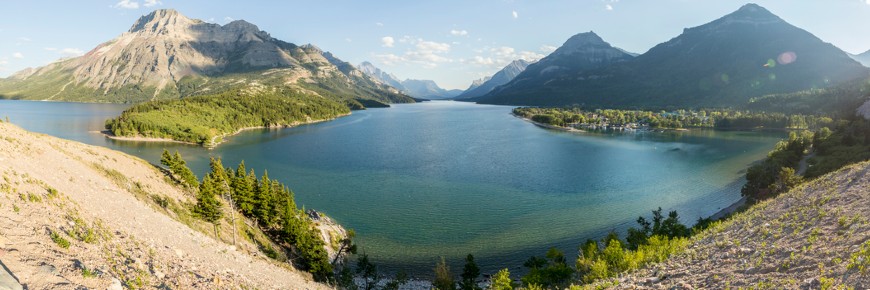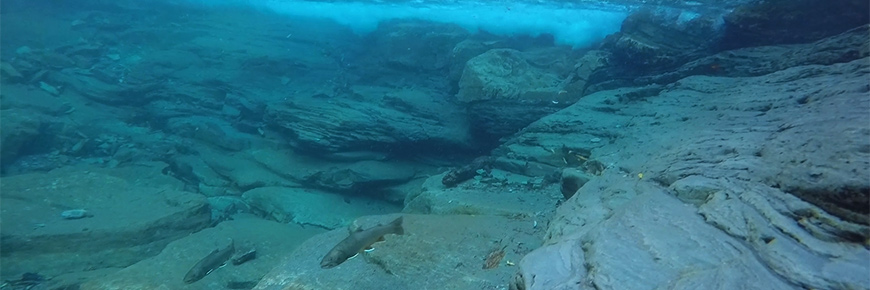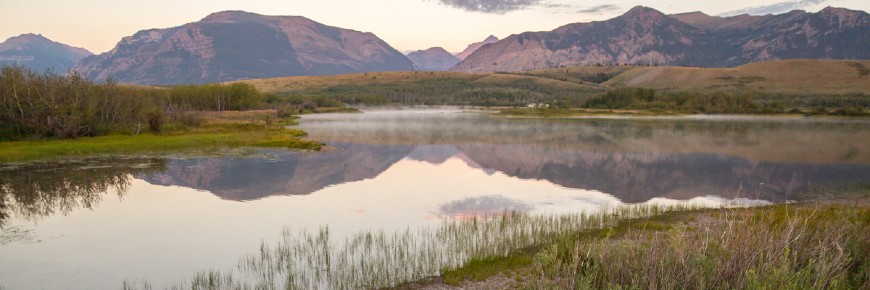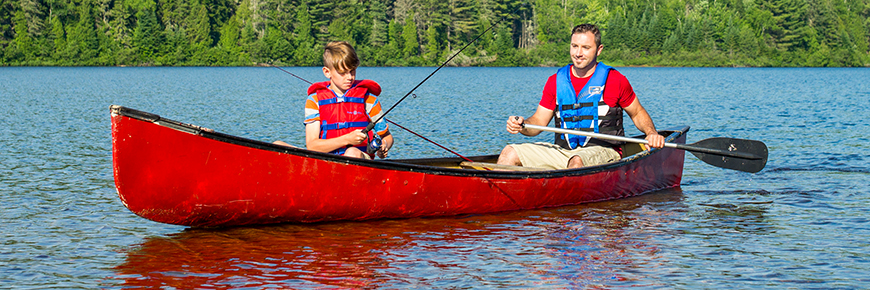
Living waters
Waterton Lakes National Park
Waterton has a wide variety of waterbody types and aquatic species. Beautiful alpine lakes, tranquil wetlands, flowing rivers and unique aquatic biodiversity are all found here. About 80 lakes, ponds and streams make up the park's living waters and become part of the living landscape of the Crown of the Continent ecosystem.
The Waterton Lakes chain

The Waterton Lakes chain - Upper, Middle and Lower Waterton Lakes and the Maskinonge wetland - is one of the most distinguishing features of the park. Upper Waterton Lake is the deepest lake in the Canadian Rockies - 148m (487 ft) at its deepest. Together, these lakes make up almost two-thirds of the total water surface area in the park.
The Waterton Lakes have a unique aquatic ecology. They are one of the only known lakes that naturally have bull trout (a threatened species), lake trout, pygmy whitefish, and glacial relic species such as opossum shrimp and deepwater sculpin.
Abundant rain and snow melt east of the continental divide flow through the park's two main watersheds, eventually flowing out via the Waterton River or the Belly River across the plains, through the boreal forests and into Hudson's Bay. As part of the Crown of Continent region, the park protects headwater sources for downstream ecosystems and communities. These headwater ecosystems support local biodiversity and ensure healthy flow through the entire system.
Life under water

The park's mountain waters are cold (normally well below 15°C), high in oxygen and low in nutrients, with little plant life. Although the abundance of individuals is naturally lower than warmer areas, the variety of aquatic life is high, with numerous species of bacteria, fungi, protozoa, invertebrates, snails, worms, planktons, plants, and six amphibian and 22 fish species.
Don't forget the wetlands!

Riparian zones
Riparian areas surround all lakes, rivers, streams, and ponds in Waterton. These are the ‘wetter than dry, but drier than wet’ zones acting as a buffer between aquatic and terrestrial environments. Plant life in riparian areas, like cottonwood trees, requires moist growing conditions and provides shade to keep the water cool. Riparian areas play an important role in the health of aquatic ecosystems and support aquatic species at risk. In fact, riparian areas are part of the Critical Habitat for bull trout and are protected under the Species at Risk Act.
Wetlands
Wetlands, often overlooked areas of the park, are where water slows down and abundant nutrients support a diversity of plants and animals. These intriguing places integrate much of what makes Waterton special - cold, clean waters, colourful and abundant plant life, and a rich gathering of birds, invertebrates, amphibians, reptiles and mammals. Wetlands are found throughout the park. The largest and most notable is the Maskinonge, easily seen from the Entrance Road.
Angling

Angling is a popular activity, but also affects aquatic life. Parks Canada, valuing the unique and delicate balance within its aquatic ecosystems, must carefully manage this activity in Waterton Lakes National Park. Parks Canada has committed to allowing recreational angling to continue. Fishing in general and some specific angling practices are not permitted when they harm native species or damage aquatic ecosystems.
Parks Canada is working to restore and protect important aquatic species at risk in Waterton Lakes National Park, including westslope cutthroat trout, bull trout, northern leopard frogs, and long-toed salamanders. New fishing regulations emphasize targeting non-native species like rainbow, brown and eastern brook trout. Non-native fish were stocked for recreational purposes in the park from the early 1900’s to the 1980’s. Stocking for recreational purposes is no longer practiced in the national parks. Native species are being restored and protected under the new regulations and recovery strategies.
Regulations are also in place to reduce hooking injury and deaths, and protect vulnerable spawning, overwintering, migration and rearing areas.
Related links
- Date modified :